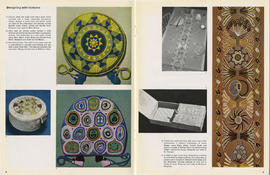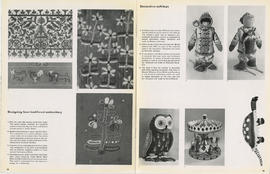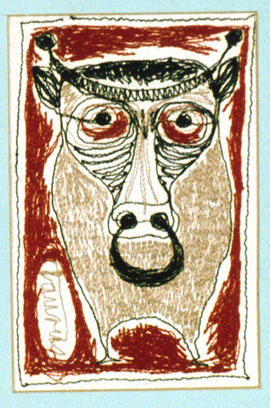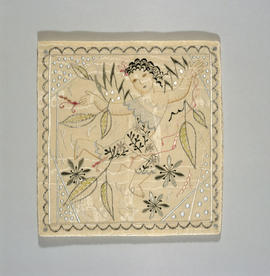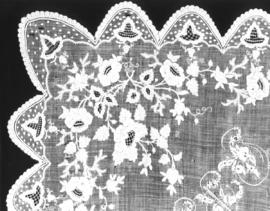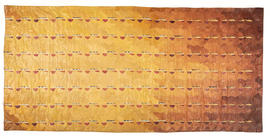The collection consists of the surviving papers of the Needlework Development Scheme and over 100 examples of needlework. Of these examples, 28 are from Great Britain and 54 are examples of non-British work including examples from Greece, India, Norway, Sweden, Italy, Switzerland, Turkey and Bosnia. Items include ecclesiatical, domestic, costume, clothing and modern embroideries, tea cosies, funeral pall, clothing, lace work, wall hangings, samplers, linen work and cushion covers.
The surviving papers include a complete inventory of 1012 items that were part of the Needlework Development Scheme prior to its dispersal in 1961. This provides information on the original numbering scheme used for the needlework examples and also provides information on the provenance of each item, although this is not necessarily the creator of the item but the person from whom the item was received, as well as a description of the item itself. There is an inventory of the parts of the collection received by the Glasgow School of Art, insurance details concerning the collection and the correspondence of the Needlework Development Scheme, 1931-1941.
This material may contain sensitive information about individuals that is protected by the Data Protection Act. Until this material has been checked for sensitive information, it will not be available for researchers. Once this Data Protection work is complete the collection will be open for access, however any sensitive information will be closed and inaccessible for 75 years from the date of creation.

